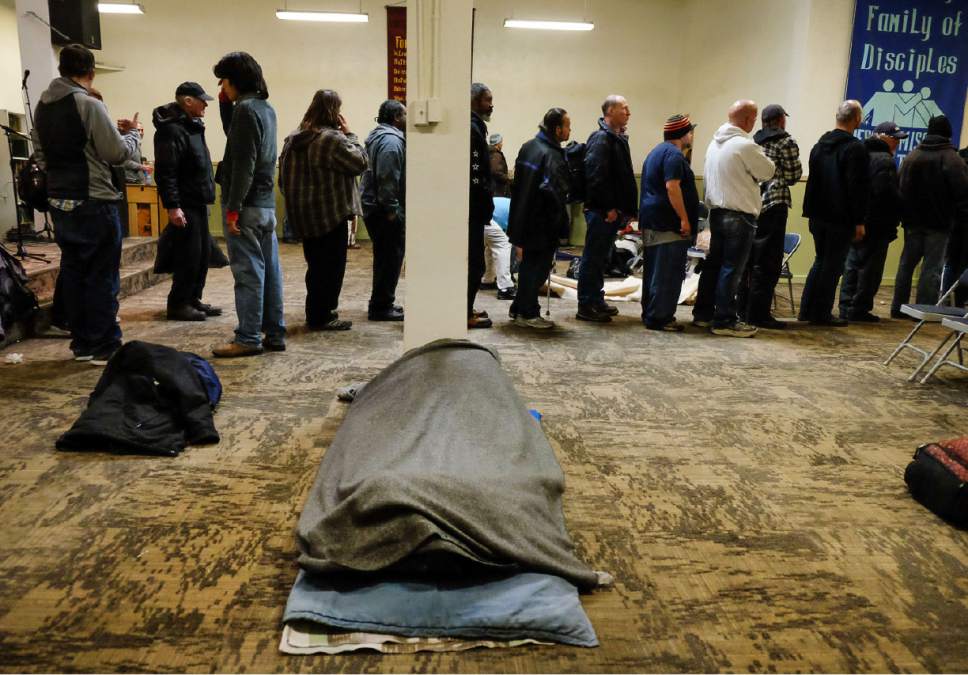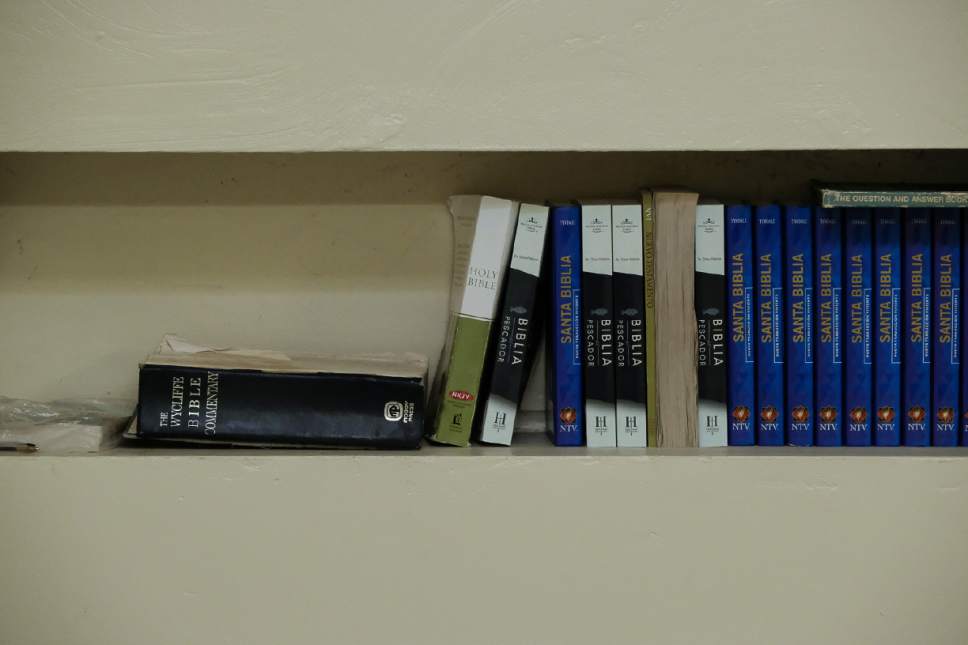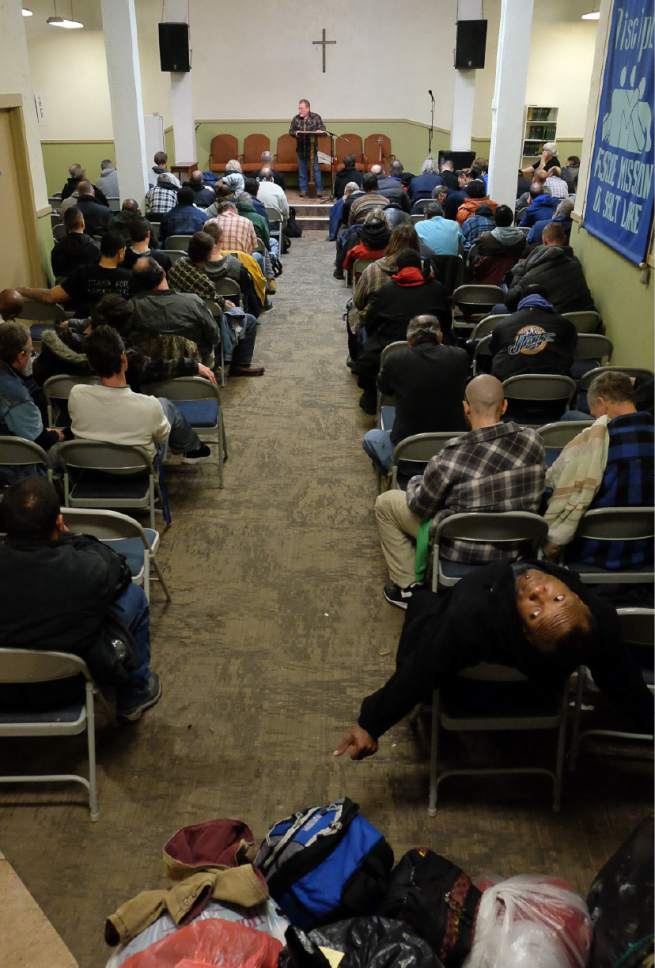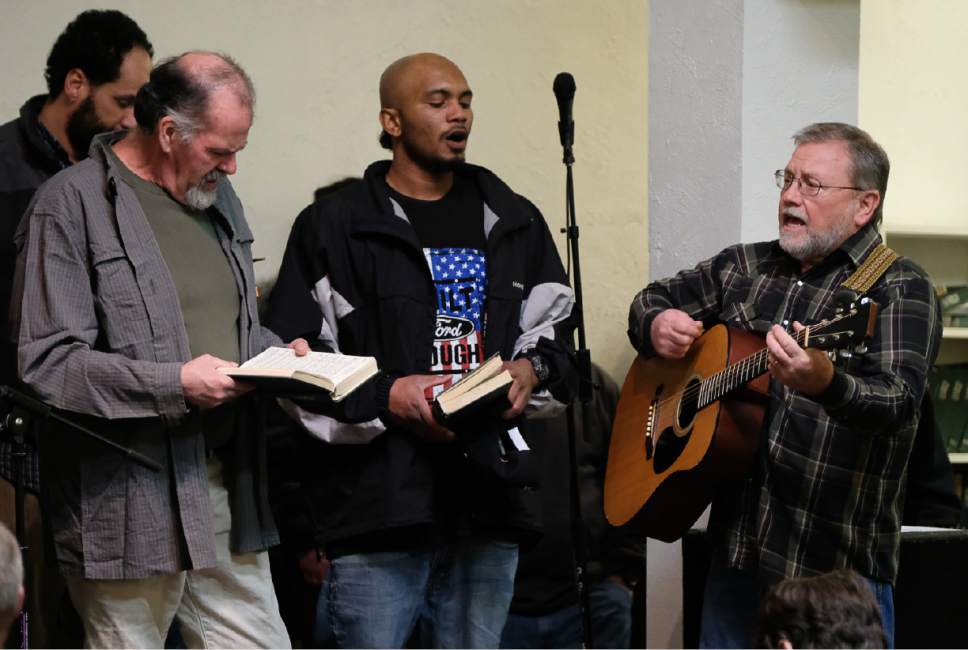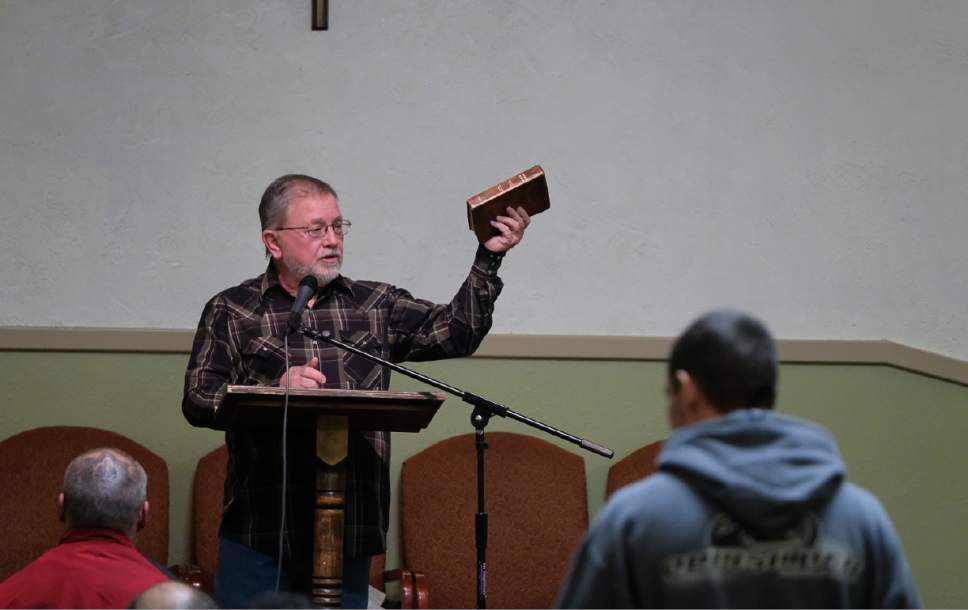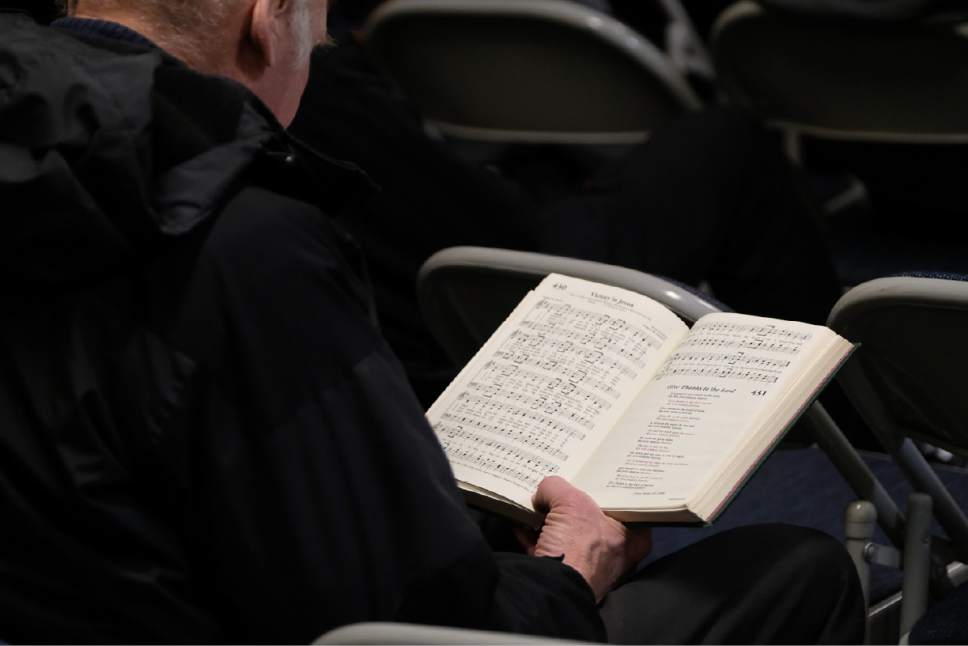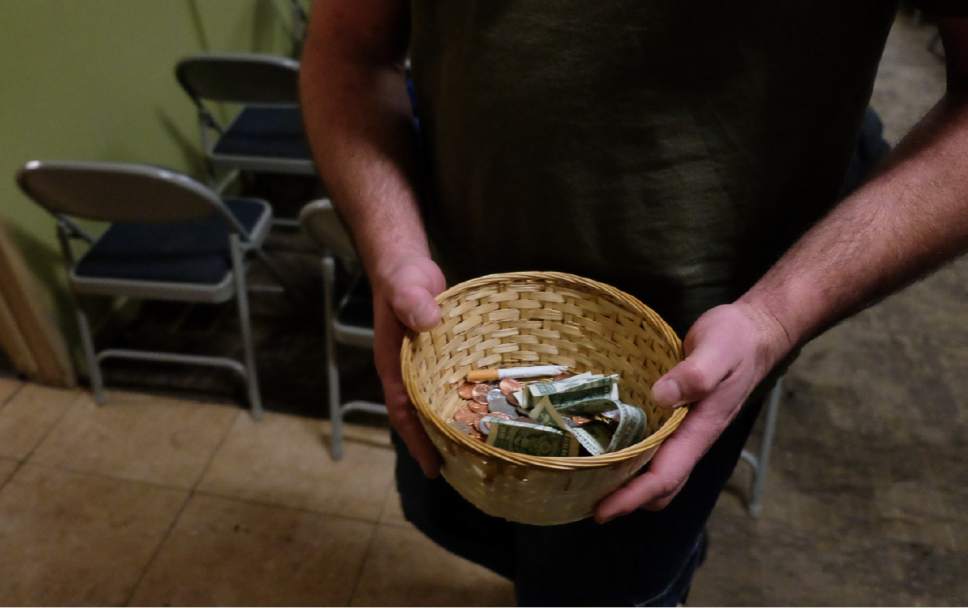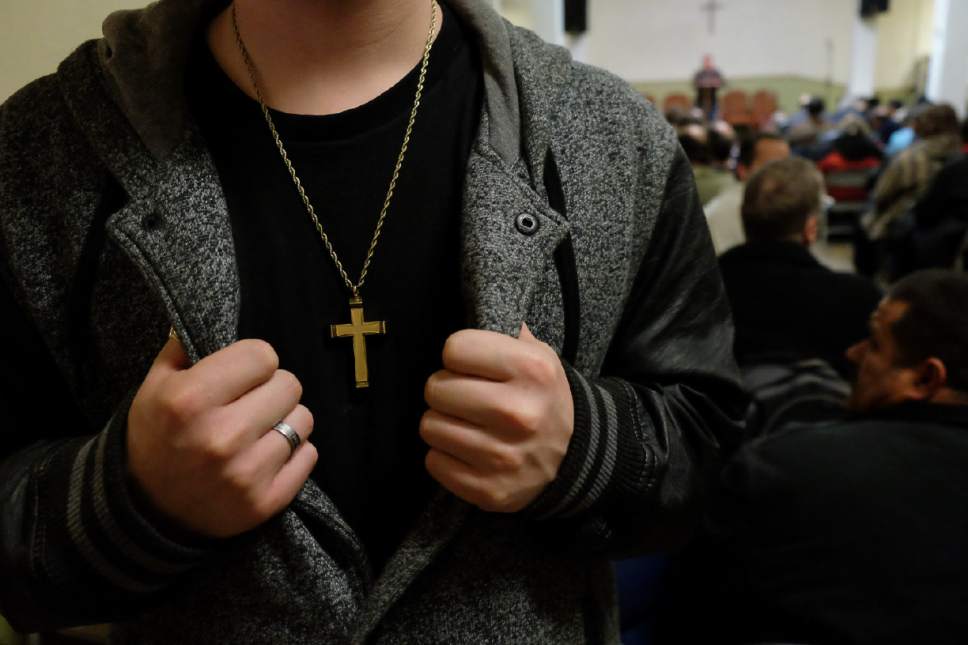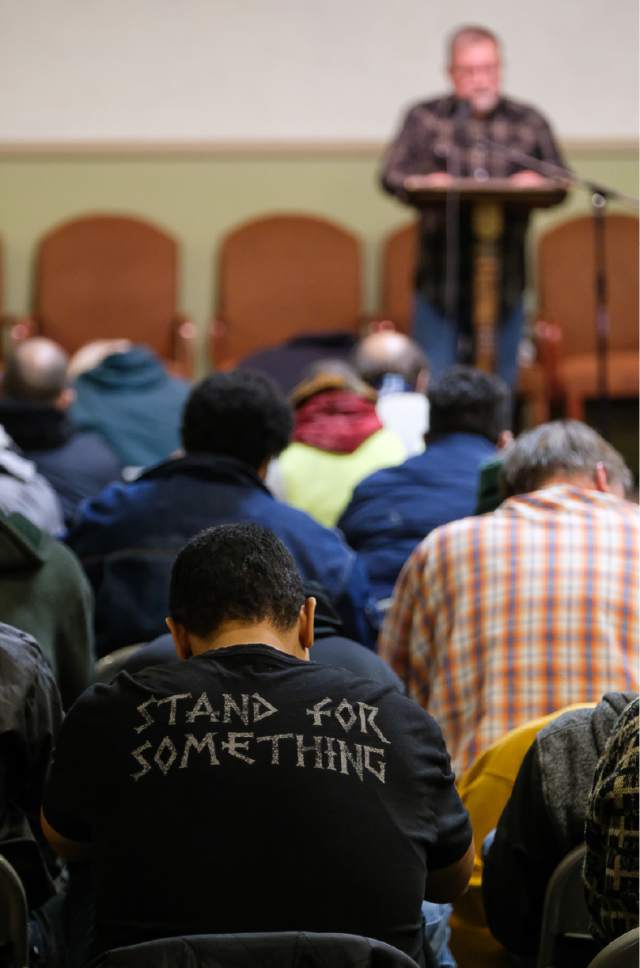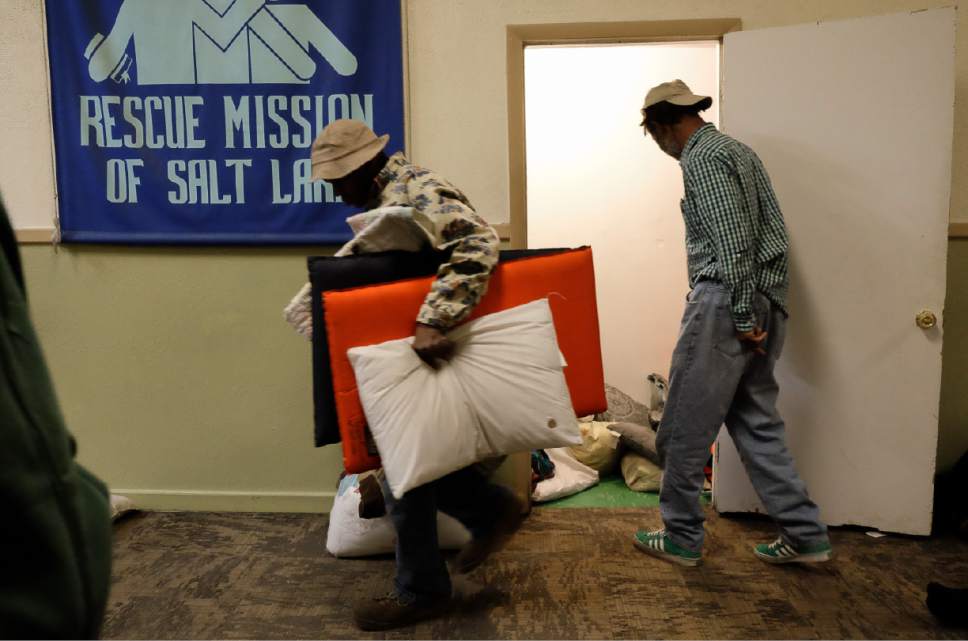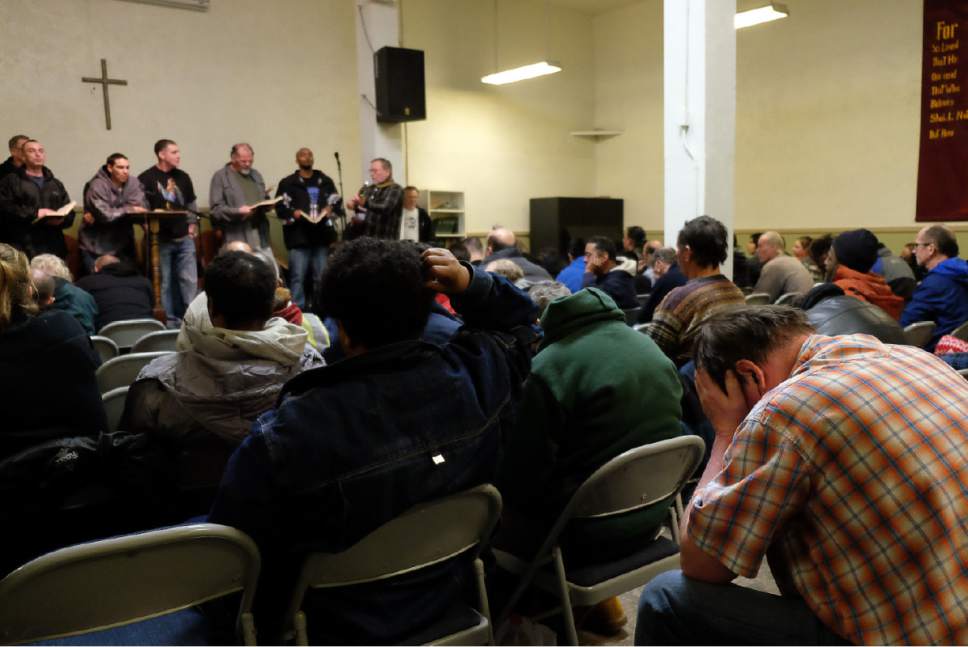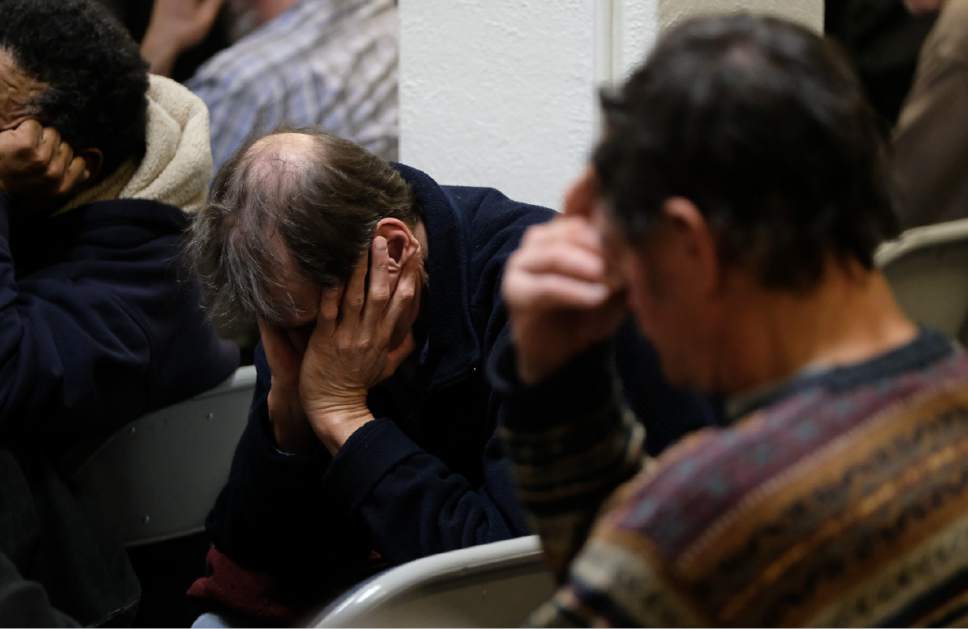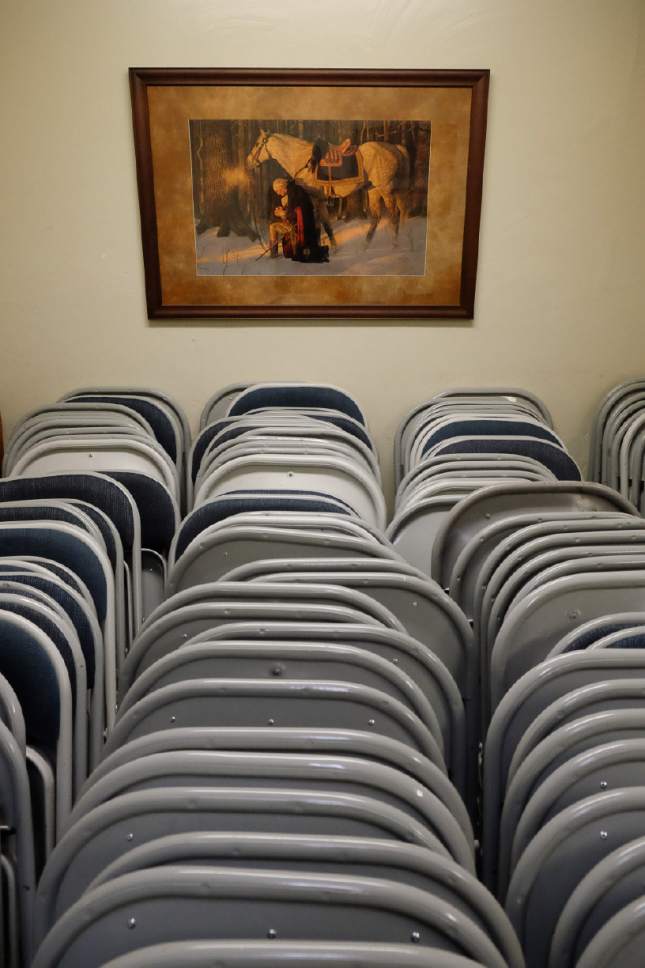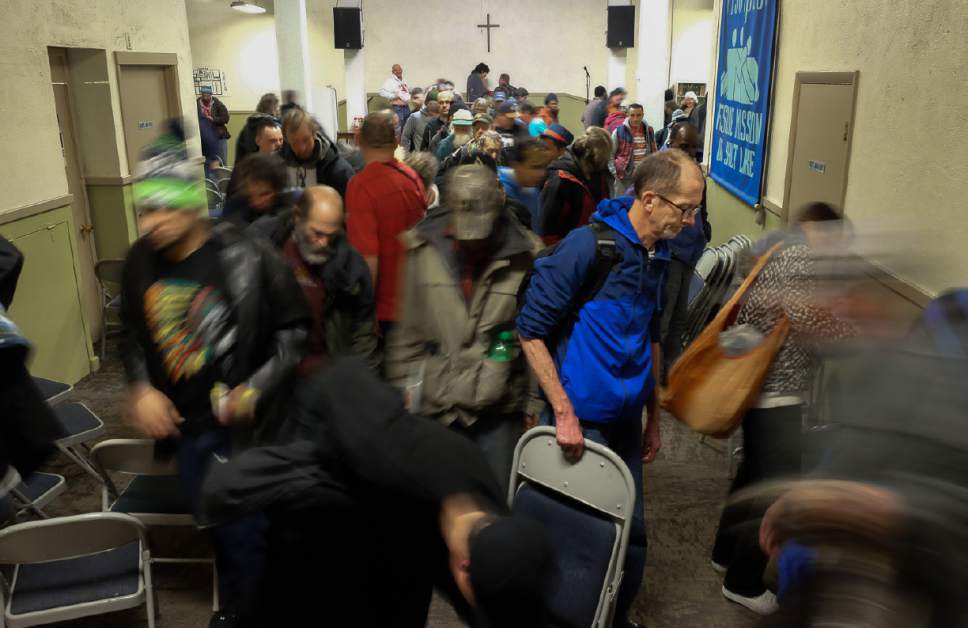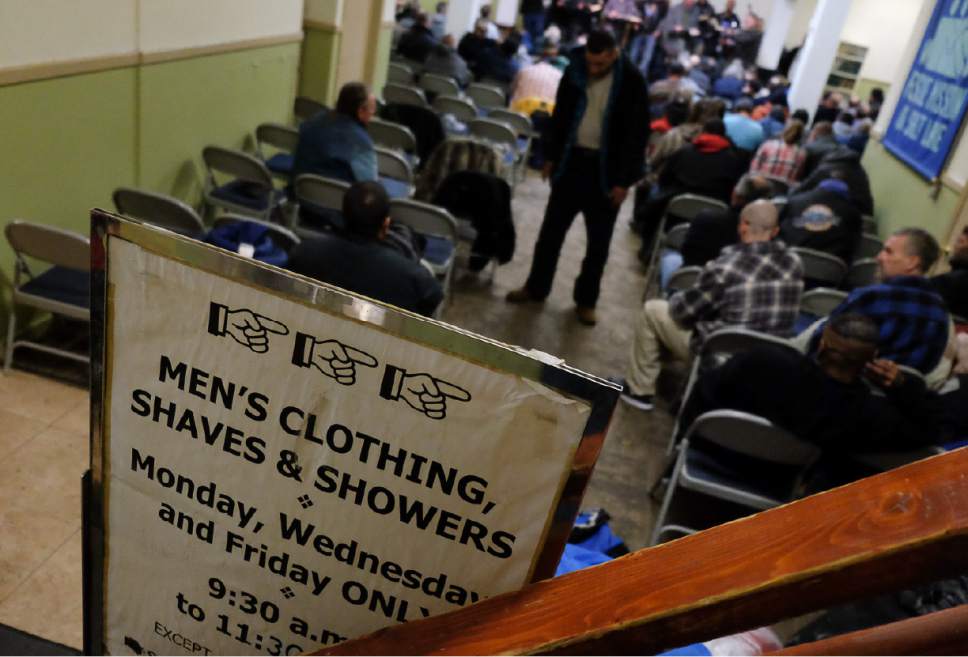This is an archived article that was published on sltrib.com in 2017, and information in the article may be outdated. It is provided only for personal research purposes and may not be reprinted.
On a recent Sunday morning in a nondescript rectangular room at a forgettable brick building in a run-down part of Salt Lake City, a Mormon authority addresses about 50 people sitting reverently on tan plastic chairs.
"What would Jesus do if he were in Salt Lake City?" the visitor with a French accent asks the tiny crowd. "I think he would come here to meet those who need him. Whatever your condition, you qualify for the Lord to come here first."
About half the attendees are smiling couples with an identifiable LDS look — well-groomed men in dark suits and ties, smartly tailored women in midcalf-length skirts — and the other half include bearded, long-haired men in white shirts and tennis shoes, or leather jackets with vests and ties, and a few jean-wearing women. A man brings a plate of food to eat during the one-hour service.
Coughing and sniffing punctuate the quiet.
"Many of us may feel we are not worthy, that we have failed and do not fit in the church," LDS Presiding Bishop Gérald Caussé, who oversees the global faith's vast real estate and commercial holdings, tells his listeners. But all Mormons, no matter their circumstances, "are disciples of Christ. We just start where we are."
With a familiar image of Jesus on the wall behind him, Caussé notes his surroundings.
"Today we are in this humble chapel, and it has the same meaning to the savior as any of those big, big meetinghouses we see all over Utah," he says. "Sometimes I wish we had only these kinds of facilities because we would turn to God even better."
This is the LDS Church's Rio Grande Branch, whose boundaries on the western edge of downtown Salt Lake City take in several homeless shelters — including The Road Home and the Rescue Mission of Salt Lake — and whose members have no permanent address.
"If all they want is to come and worship and don't ask for anything else, that's OK," says Alan F. Urie, the branch president (a lay clergyman who leads the congregation). "We just want to provide a spiritual haven."
That may seem a reasonable goal shared by Christians everywhere, but the approach is uniquely Mormon. Latter-day Saints, like other faiths, feel a divine duty to ease the physical suffering of the homeless, providing food, shelter and lifesaving goods. Few religious groups, though, set aside congregations exclusively for the downtrodden.
—
'No strings attached' • The St. Vincent de Paul Dining Hall and nearby Weigand Homeless Resource Center are sponsored by the Catholic Diocese of Salt Lake City. Both provide a range of vital services, but neither offers worship meetings to their residents. No Catholic Masses, no baptisms, no priests or nuns on the premises. No confessions for those serving or being served. Not even on holy days. Volunteers may help transport believing homeless to a church of their choosing, but no shelter-endorsed God talk is allowed.
"Our [humanitarian] services are open to everyone free of charge," says Dennis Kelsch, director of homeless services for Catholic Community Services, "with no [religious] strings attached."
And while the Rescue Mission is an overtly Christian-based nonprofit organization, its daily, weekly and yearly residents do not form any kind of cohesive worship assembly. Each morning, 100-plus men and women are welcome to attend staff-led Bible study classes. Each evening, they join in a nightly chapel service, during which 35 evangelical Christian churches in Utah rotate their clergy to lead worship.
In the large open room, with a giant wooden cross centered on a white wall, those planning to stay the night gather on folding chairs to listen, sing and silently ponder their lives.
On a recent weeknight. Jack Marshall of the Salt Lake Christian Center leads the hungry men (dinner is served directly after the chapel service) in prayer — sometimes they bow their heads, other times they raise their hands to heaven or just sway.
Marshall accompanies the "praise hymns" with his guitar.
The mission's website reports that, in 2015, some 190 attendees made "professions of faith" or, in other words, came to Jesus.
"Spirituality is very important for our clients to reach their God-given potential," says Chris Croswhite, the mission's executive director. But no one seeking food or shelter is expected to share the nondenominational Christian "faith perspective."
The hope, according to a video about the mission, is that "graduates" of the program can become "God-dependent, self-sufficient, contributing members of society." Once the homeless get back on their feet, Croswhite says, the Rescue Mission hopes area churches will embrace them and continue to offer support and mentoring as they move along their religious paths.
—
A congregational approach • The Rio Grande Branch is one of two small Mormon congregations in Salt Lake City specifically for the homeless (the other one is associated with Palmer Court, where chronically homeless families have apartments). Both are attached to stakes (regional clusters of LDS congregations), which provide help with worship services.
"Most [of the members] stay in the shelters, but some of them sleep on the streets because they don't trust circumstances at the shelter," Urie says. "Some have been there many years; some five days."
The Rio Grande Branch of The Church of Jesus Christ of Latter-day Saints was organized a few years ago to meet the spiritual needs of Mormons, former members or interested observers within the boundaries. They come with an array of addictions, economic woes and mental health challenges.
"We take them as they are," Urie says.
He has spent countless hours sitting with a woman while she detoxed at the University Neuropsychiatric Institute, "home teaching" (offering individualized ministration) at the prison and visiting sick members at the hospital. It's not all that distinct from a Mormon ward in Atlanta, where Urie served as a lay bishop some years ago.,"People are people; members are members," the self-effacing leader quips. "The main difference is those in my other ward had doorbells."
Monthly testimony meetings (spontaneous open-microphone sessions) in these branches are powerful, says Mel Gardner, regional director of LDS correctional services for Salt Lake, Summit and Tooele counties, who, with his wife, provides training and oversight to these two branch presidents, as well as wards in prisons, jails and halfway houses.
"We've seen so many people go through this revolving door from corrections to street and back again," Gardner says. "It takes a spiritual component to end the cycle."
He recounts the story of a young woman from the Midwest, whose husband and three children were on their way to pick her up from work when their car was hit by a tractor-trailer. The four were all killed.
The woman began drinking heavily, got in her car and headed west. She broke down in Salt Lake City, where she lived under an abandoned semi for three years.,Eventually, the distraught survivor recognized God's hand in her life and found her way to the LDS Church, Gardner says. "She's still a heavy drinker, but is at church every Sunday and attends addiction-recovery meetings every week,"
You can't help, he says, "but love this lady."
Marty Gorecki was reared a Mormon in South Carolina but resigned from the Utah-based church at about 18. He spent decades fighting personal demons until fall 2015, when he found himself in the Beehive State. Two weeks ago, the now 45-year-old was rebaptized into the LDS fold and recently blessed the sacrament, or communion, for the first time.
"It's a special branch," he says. "People feel broken here, then the branch opens the door for the [Holy] Spirit to come."
Though he has no physical abode, Gorecki says, he feels secure in the Rio Grande Branch as his "new spiritual home."
pstack@sltrib.com. twitter: @religiongal


